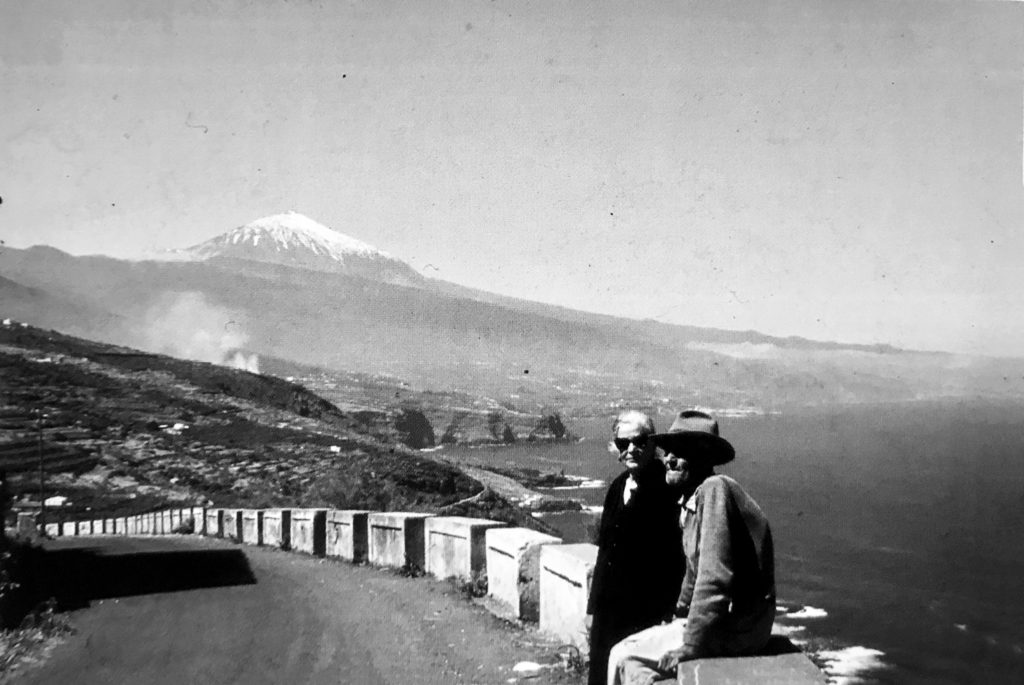Remembering is living, it is “going through the heart again,” as Eduardo Galeano wrote in The Book of Hugs. It was that “magical definition” that inspired the psychologist and photographer Juanra Álvarez to design the traditional City Council calendar for next year as if it were a retrospective trip through the municipality.
Black and white images between the 40s and 80s illustrate the thematic almanac that the City Council distributes each year among the residents of the municipality, a custom that it has maintained for more than 15 years and that is demanded by citizens, not only for its beauty. of its photographs but because it is a practical and functional document since it contains telephone numbers of interest, local festivities and a calendar of municipal events.
During all this time Álvarez has been responsible for devising it. Until now, he had always included snapshots of his authorship, however, on this occasion he immersed himself in a work of research and compilation of images of the history of the municipality of the last 80 years for which he had the special collaboration of the graduate in History of Art Yaiza Díaz.


This exhaustive work that began at the beginning of the year brings together 41 photographs that represent the social and cultural journey of El Sauzal in the last eight decades and highlights the people, history, customs and places such as El Calvario, San José , San Pedro, the Carretera General, Ravelo, San Nicolás or the coast, an enclave of singular beauty.
Thus, you can see the men who led the San Pedro festival commission, a group that no longer exists, sitting next to the stage in the square, smoking, at the end of the 60s and 70s; women who collected water from Los Lavaderos or at one of the evenings held in the San Pedro society, the epicenter of all important social events, including weddings, in those same years.
Faithful to its objective and just as it did in previous years, the calendar seeks the proportionality resource of the entire municipality, that is, that all neighborhoods and areas are represented.
The psychologist delved into the archives of the City Council, the church, and moved between associations, groups and individuals who gave them the photographs. “Once I have entered private homes and associations, I have been chatting with all those people because it is about generating an emotion through memory. With this memory of the relatively recent past I have seen people very excited, very willing and very grateful for this idea that I think the entire municipality will like,” he confesses.
He assures that people have gladly provided the photographs and in addition, it has been a moment to talk and remember with those people.
The 2024 calendar is structured in 14 pages. The twelve corresponding to each month have a main photo and a complementary one on the same theme or neighborhood, to which are added a cover and an annex that includes a gallery with 16 images of different events.


The twelve months
The month of January is dedicated to culture and festivals, such as those of San Pedro and Corpus Christi; February to the mid-range landscapes; March to San José and his hacienda, a place full of stories; April to the main road, the main entrance to the municipality; and May to the El Calvario neighborhood.
June is for the town, a space of public life in the 60s, and July, the quintessential month of summer, for the coast. August is dedicated to Los Angeles, the first urbanization that began to take shape at the beginning of the 50s and 60s, while September has as its theme that of San Nicolás and its cozy surroundings of the hermitage; and in October the protagonists are the different groups of the municipality. The last two months of the year, November and December, are for Los Lavaderos, one of the most charming corners of El Sauzal, and the Ravelo neighborhood, respectively.
Juanra Álvarez emphasizes that the yearbook “is a tribute to older people, who will look nostalgically at these photographs and at the same time, a lesson for the youngest and adults who did not live through those times, who will come across images of a municipality that has nothing to do with the current one but that through this retrospective is valued.”
“We invite everyone to remember El Sauzal of yesteryear. Seeing is believing and, if necessary, remember it later. Only in this way will we have the possibility of clearly imagining the richness of past times, and that, in turn, it lasts in our memory,” reflects the psychologist.















